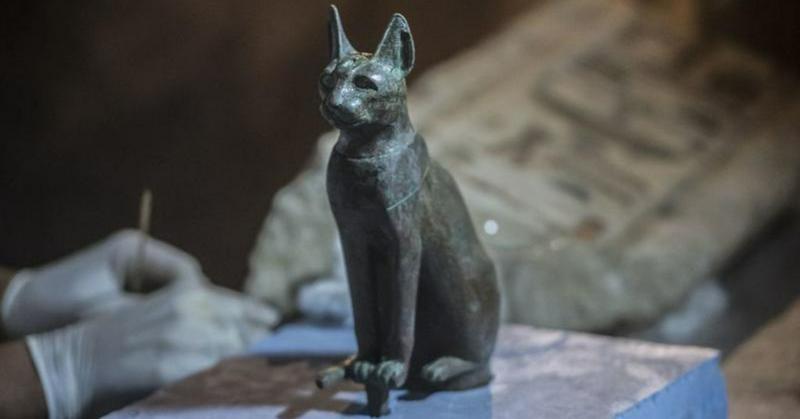History Of Cats: How Did We Domesticate Felines?
By | December 9, 2020

House cats today are not much different from their wild ancestors. Their fierce independence and hunting prowess may have been why humans came to revere—and in some cases, worship—the cat, but at what point in the history of cats did they deign to live in our homes? How did we domesticate cats?
The History Of Cats
Unlike dogs, who evolved considerably over the domestication process as humans bred them for specific jobs, cats have remained largely unchanged since ancient times. With the exception of the tabby cat, which has developed a distinctive coat, today's cats are nearly genetically identical to the wildcats that lived thousands of years ago. This is part of the reason why cats can become feral rather quickly, even if they were raised as domestic cats. Despite the cushy lifestyle of pampered house pets, they still have all the skills needed to fend for themselves in the wild, if need be.
According to researchers who analyzed D.N.A. from the remains of more than 200 cats unearthed from the ruins of ancient sites in Romania, Egypt, and parts of the Middle East spanning nine centuries, the modern domestic cat likely descends from two primary lineages. One line of cats, Felis lybica lubica, originated in Africa and flourished in Egypt and the Mediterranean, while Felis sylvestris lybica traces back to southeast Asia and spread into Europe as far back as 4400 B.C.E.

The First Human-Cat Relationship
Historical evidence tells us that cats began their relationship with people more than 8,000 years ago in the agricultural communities of the Fertile Crescent in the present-day Middle East. It's believed that cats approached humans first, not because we seemed cool and they wanted to hang but because the grain storage buildings in human settlements were a buffet of mice and rats. Nobody particularly minded the company of a bunch of cute exterminators who otherwise didn't demand too much, so the humans and cats settled into a peaceful coexistence. Cats most likely followed humans on their nomadic wanderings, chasing that sweet, sweet mice supply, and when when villages grew into cities, cats remained.

The Divine Feline
The human-cat relationship was most notable in ancient Egypt, which is credited for elevating cats from farm helpers to pets. The people of ancient Egypt believed cats had magical powers and the ability to bestow good fortune on those who housed them, so they were dressed in priceless jewels, fed the finest foods from exquisite dishes, and immortalized in art. Cats were held in such high regard that anyone who killed a cat, even if it was an accident, was sentenced to death, and dearly departed felines were mummified and buried in tombs fit for royalty. A recently deceased cat's owners shaved off their eyebrows to signify their mourning, which lasted until they grew back.
In ancient Egyptian mythology, many of the gods and goddesses were imbued with animal traits and characteristics—the god Anubis, for example, is often depicted with the head of a jackal—but only one Egyptian goddess was worthy to transform into a cat. Bastet, the goddess of cats, fertility and childbirth, and domestic life, was tasked with protecting the home from illness and evil spirits, keeping women and children safe, and guiding the recently deceased to the afterlife.
The ancient Egyptians weren't the only people to worship cats, however. The ancient Greeks, for example, believed they were connected to the goddess Hecate, who could transform into a cat and was honored as the deity associated with hunting. In Norse mythology, the goddess Freya rode in a splendid chariot that was pulled by two gray cats who were gifted to her by Thor, the god of thunder. The Chinese cat god, Li Shou, was a protector of the home and crops and honored for hunting rats and mice.

Cats As Pets
For most of the history of cats' relationship with humans, they were useful for getting rid of mice or being worshiped as gods, but somewhere along the line, people decided they were awfully cute and cuddly. The role of cats shifted to companionship one, though while some cats are friendlier than others, most still maintain their independence and disinterest even as they share our homes. They can't be trained to do much, but they usually agree to use a litter box in exchange for an infinite supply of warm laps, which is good enough for us. As pets, cats rank second only to dogs, but only because that's the way they want it.

